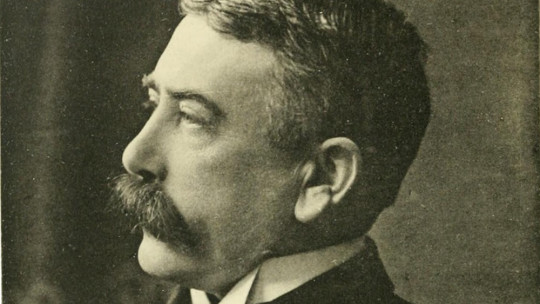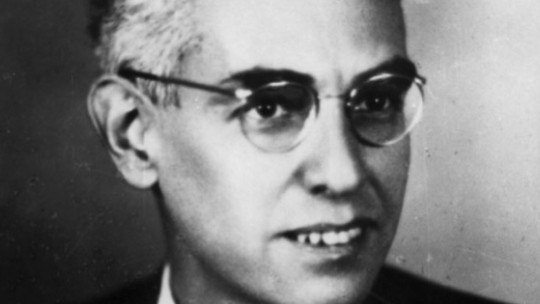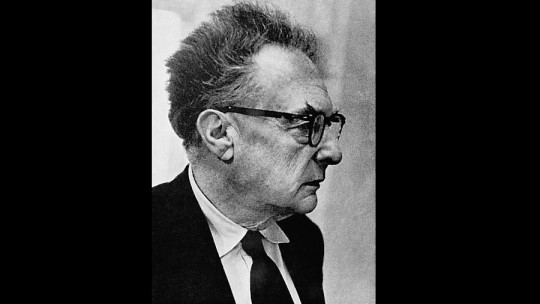Ferdinand de Saussure is known as the founder of modern linguistics and semiotics, as well as one of the precursors of structuralism and post-structuralism. This is because, among other things, he proposed reorganizing the systematic study of language. However, his life and work not only had an impact in that area.
Together with some of his contemporaries, Saussure contributed important elements to create new foundations in the study of human behavior. Next we will a review of the life of Ferdinand de Saussure through a brief biography and we present some of their contributions.
Biography of Ferdinand de Saussure, pioneer of linguistics
Ferdinand de Saussure (1857-1913) was born in Geneva, Switzerland. From a very young age he learned different languages, such as Greek, French, German, English and Latin Having grown up in a family of scientists, he studied natural sciences at the University of Geneva.
He later trained in linguistics at the University of Leipzig, where he obtained his doctorate in 1881. After this he taught courses in ancient and modern languages in Paris, and in 1891 he returned to Geneva.
In his hometown he served as a professor of Sanskrit and historical linguistics. It was not until 1906 that he taught the General Linguistics course, which guided much of his attention and that of other intellectuals to this day.
Ferdinand de Saussure developed the theory of signs that we know as semiotics , as well as other aspects of linguistic tradition. However, the impact of his work quickly spread to other fields of knowledge.
From linguistics to the study of human behavior
Together with other intellectuals of his time, Saussure provided many of the bases for the development of different approaches to human behavior. Following the American linguist Jonathan D. Culler (1986), we are going to explain four of the repercussions that Saussure’s work has had on the social sciences.
1. Human systems do not function the same as the physical world
Saussure realized that our understanding of human practices and institutions cannot be complete if we reduce explanations of our behavior to a series of events that occur just like events in the physical world. This is because he considers that, unlike the systems of the physical world, The interaction and objects that make up a human social system have meanings
That is why, when studying the behavior of human beings, researchers cannot simply dismiss or omit the meanings that things and actions have for members of a society. For example, if people consider some action to be impolite or impolite, this is a convention, a social fact crucial for social interaction and for individual practices. Thus, the linguistic sign has, for Saussure, two components: signifier (the word) and the signified (the concept to which the word appeals)
2. Development of semiotics and precursor of structuralism
Among other things, Saussure developed a general science of signs and sign systems (semiotics), as well as some of the bases of structuralism, a current that proposes that sociocultural systems are delimited by a key structure: language.
This was especially relevant for the development of anthropology, modern linguistics and literary criticism, however, some decades later it also had an impact on much of psychology and sociology. In general it allowed us to rethink the social sciences.
3. Responses to the chaos of modern thought
Saussure’s proposals also clarified much of modern thought, that is, the way in which scientists, philosophers, artists or writers They tried to represent and explain world phenomena
His work paved the way to generate new paradigms of knowledge: the idea that the scientist cannot obtain absolute knowledge as if it were a god, but a perspective is always chosen or assumed under which objects are defined by their relationships with other elements of the same system (beyond the fact that the objects have a fixed essence that can be discovered).
4. Relationship between language and mind
The way in which Saussure explains language allows us to focus attention on a problem that is central to the human sciences, especially those that are concerned with the relationship between language and the mind.
Saussure considers that humans are beings whose relationships with the world are characterized by two mental operations that are clearly manifested in language: structuring and differentiation Part of Saussure’s thinking is present in the consideration that there is a tendency for human beings to organize things into systems through which different meanings are transmitted.
Main works
The best known and studied work of Ferdinand de Saussure is General linguistic courses (General Linguistics Course) which was published three years after his death, in 1916. In fact, this work has been considered one of the most influential of the 20th century, not only for linguistics but for the social sciences However, this work is the product of the compilation made by his colleagues Charles Bally and Albert Sechehaye, who recovered the lectures and written notes of Saussure’s students.
One of his first works, which was published while he was studying for his doctorate, was Mémoire sur le système primitif des voyelles dans les langues indo-europeennes (Memory of the primitive vowel system in Indo-European languages), where discusses how the original Indo-European vowels can be reconstructed This was one of his beginnings in philology and linguistics.









